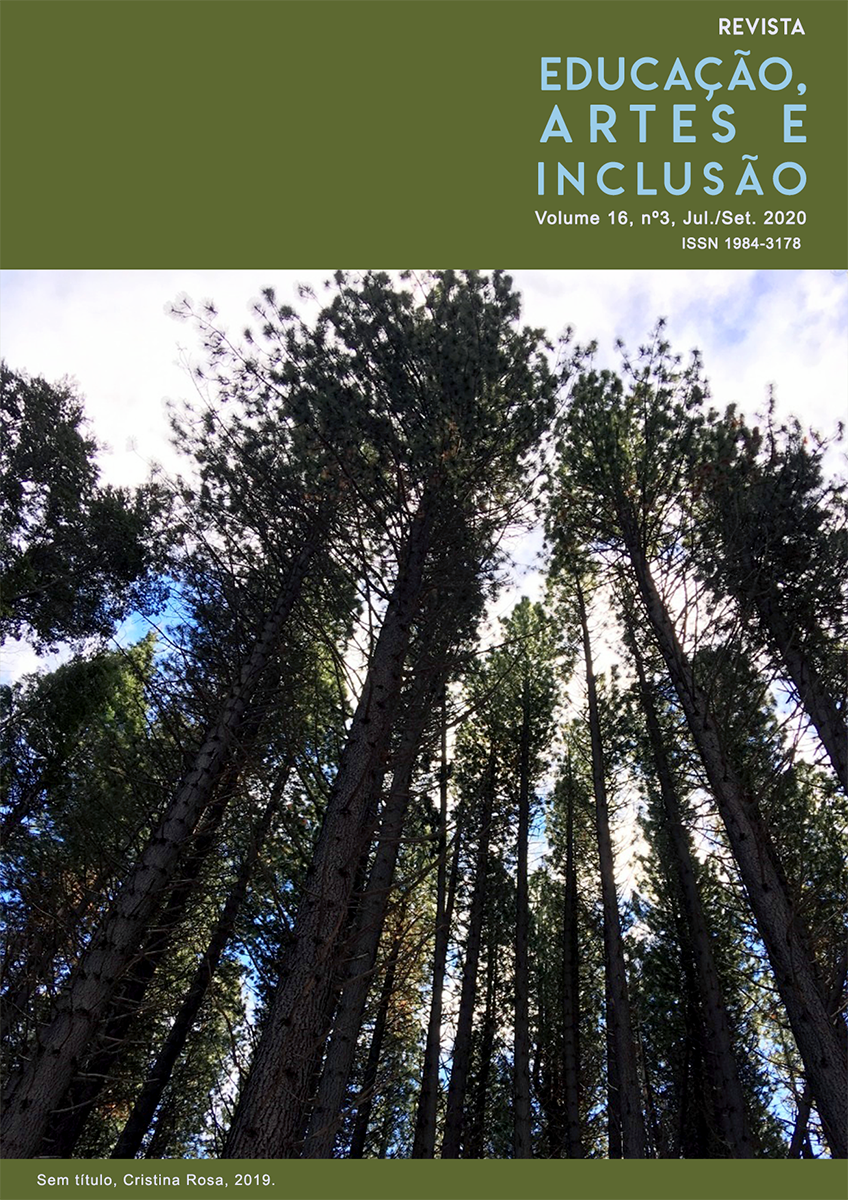Cross-Cultural Narrative through graphic stories In Polisario Refugee Camps
DOI:
https://doi.org/10.5965/198431781632020103Palabras clave:
Visual Interaction, Graphic Storytelling, Saharawi Refugee CampsResumen
The Graphic Novel as a development of the last decades and nowadays an independent art form is presented in the context of workshop series within its educational potentials. Graphic story telling workshop series as methology exemplifies us an alternative form of communication beyond textual literacy. This took place within the framework of teacher training workshops in the Polisario refugee camps in Algeria. With the possibilities of the graphic novels, contents from the school environment and the everyday life of the participants were developed by means of art education, in the sense of a reflection of the own work event/ reference, for oneself and others. Drawings and personal stories from everyday life were developed in detail in the form of successive pictures and pictorial elements, sometimes including writing. In a non-verbal and playful way, the reality of life should come to face. In particular, one's own experiential space should be experienced as a source of creativity - personal, original, self-referential should be appreciated and valued. Unconventional forms of communication were generated and established as mutually effective educational methods.Descargas
Citas
ARENDT, Hannah. Macht und Gewalt. München: Piper, 1970.
EISNER, Will. Graphic Storytelling and Visual Narrative. 9th edition, Tamarac, 2004. Communicating about Graphic Novel – Series of Workshops. Universität Maribor, https://doaj.org/article/d54114147dd3407cb8bcc2cc45402c06. Acess Sept. 23, 2019.
FENNINGER, Erich and WEIDENHOLZER, Josef. Preface. In: FENNINGER, Erich. Von Freiheit träumen. Das Flüchtlingsleben der Westsahrauis. Wien: Mandelbaum, 2001.
GALEANO, Eduardo. Mauern – die Sahraouis dürsten nach Gerechtigkeit. 2006. http://www.oesg.ws/mediaarchiv/1/media/ Dokumente/Mauern_von_Eduardo_Galeano.pdf. Acess march, 20, 2020.
GALEANO, Eduardo. Walls. 2015. http://removethewall.org/walls-eduardo-galeano/ Acess march, 20, 2020.
HERRIGER, Norbert. Empowerment in der sozialen Arbeit. Eine Einführung. Stuttgart: Kohlhammer, 2014.
LAVEN, Rolf. Franz Čižek und die Wiener Jugendkunst. Wien: Schlebrügge, 2006.
MAROTZKI, K., W. and STOETZER, K. The Stories behind the Images (Die Geschichten hinter den Bildern. In: MAROTZK, K and NIESYTO, H. (eds.) Image interpretation and image understanding. Methodical approaches from a social science, art and media education perspective. (Bildinterpretation und Bildverstehen. Methodische Ansätze aus sozialwissenschaftlicher, kunst- und medienpädagogischer Perspektive). Wiesbaden: VS Verlag für Sozialwissenschaften, 2006.
MAYRING, Philipp. Introduction to qualitative social research (Einführung in die qualitative Sozialforschung). Weinheim: Basel, 2002, p. 50-54.
STRÖTER-BENDER, Jutta and WOLTER, Heidrun. The UNESCO World Heritage Site in art lessons. Materials for Primary Schools, Vol.1 (Das Weltkulturerbe der UNESCO im Kunstunterricht. Materialien für die Grundschule, Band 1). Donauwörth, 2005.
UNO RESOLUTION S/RES 2414 (2018) ADOPTED AT THE 8246TH SESSION OF THE SECURITY COUNCIL ON 27.04.2018
WELSCH, W. Use of terms in the sense of Wolfgang Welsch: Transculturality. In: KIRLOSKA-STEINBACH, Monika; DHARAMPAL-FRICK, Gita and FRIELE, Minou (org.): The interculturality debate - leading and controversial terms (Die Interkulturalitätsdebatte – Leit- und Streitbegriffe). Freiburg, 2012.
STAIGER, Michael. Pictures tell a story. On dealing with visual narrativity in German lessons (Bilder erzählen. Zum Umgang mit visueller Narrativität im Deutschunterricht). In: OOMEN-WELKE, Ingelore and STAIGER, Michael (publisher). Images in media, art, literature, language, didactics. Special Edition for Adalbert Wichert (Bilder in Medien, Kunst, Literatur, Sprache, Didaktik. Festschrift für Adalbert Wicher). Fillibach, p. 41-51, 2012.
UHLIG, Bettina. The narrative dimensions of the childlike image concept (Die narrativen Dimensionen des kindlichen Bildkonzepts). In: LIEBER, Gabriele and UHLIG, Bettina (org.). Narration: Transdisciplinary paths to art didactics in context of art education (Narration: Transdisziplinäre Wege zur Kunstdidaktik (Kontext Kunstpädagogik), München. p. 175-187, 2016.
Descargas
Publicado
Cómo citar
Número
Sección
Licencia
Declaración de Derecho de Autor
Los autores que publican en esta revista concuerdan con los siguientes términos:
(A) Autores mantiene los derechos de autor y concede a la revista el derecho de primera publicación, con el trabajo simultáneamente licenciado bajo la Licencia Creative Commons Attribution que permite el compartir el trabajo con reconocimiento de la autoría y publicación inicial en esta revista.
(B) Autores tienen autorización para asumir contratos adicionales por separado, para distribución no exclusiva de la versión del trabajo publicada en esta revista (por ejemplo, publicar en repositorio institucional o como capítulo de libro), con reconocimiento de autoría y publicación inicial en esta revista.
(C) Esta revista proporciona acceso público a todo su contenido, ya que esto permite una mayor visibilidad y alcance de los artículos y reseñas publicadas. Para obtener más información acerca de este enfoque, visite el Public Knowledge Project.
Esta revista tiene una licencia Creative Commons Attribution-NonCommercial 4.0 International. Esta licencia permite que otros remezclen, modifiquen y desarrollen su trabajo con fines no comerciales, y aunque los trabajos nuevos deben acreditarlo y no pueden usarse comercialmente, los usuarios no están obligados a licenciar estos trabajos derivados bajo los mismos términos.





